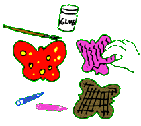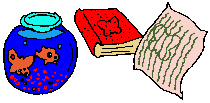Hiding to Save your Hide
Hiding to Save your Hide
One way animals defend themselves is through camouflage, the art of hiding. They cannot be eaten if they cannot be seen.
Many animals are even harder to find than Waldo.
These animals look like their surroundings. The walking stick insect would be easily spotted in the snow, but invisible in a tree or bush. See if you can make the moths below invisible to predators.



1. Cut out the moth figures.
(To make them sturdier, glue this page to a cereal box or stiffer paper and then cut out the moths)

2. Look for patterns, colors, shapes, and shadows in your house that the moths can use to help them hide.

3. Use crayons, markers, paint, fabric or anything else to create moths that will match its surroundings. Try to make each moth different.
 4. Hide a moth in a room. Have an adult or older brother or sister enter the room as a moth-stalking animal and see how long it takes to find the moth. Take turns hiding the moths for each other.
4. Hide a moth in a room. Have an adult or older brother or sister enter the room as a moth-stalking animal and see how long it takes to find the moth. Take turns hiding the moths for each other.
Where was it hardest to find the moth? Where was it easiest to find? Can you design a new moth to hide in these places? What did you learn from testing the moth's camouflage? Can you hide a bigger animal using camouflage?
 Trace the moths to make more, or use a stuffed lunch bag as a larger animal to decorate and hide. Try camouflaging yourself and hiding. Think about what to wear to play Camouflage-and-Seek with your parent.
Trace the moths to make more, or use a stuffed lunch bag as a larger animal to decorate and hide. Try camouflaging yourself and hiding. Think about what to wear to play Camouflage-and-Seek with your parent.
